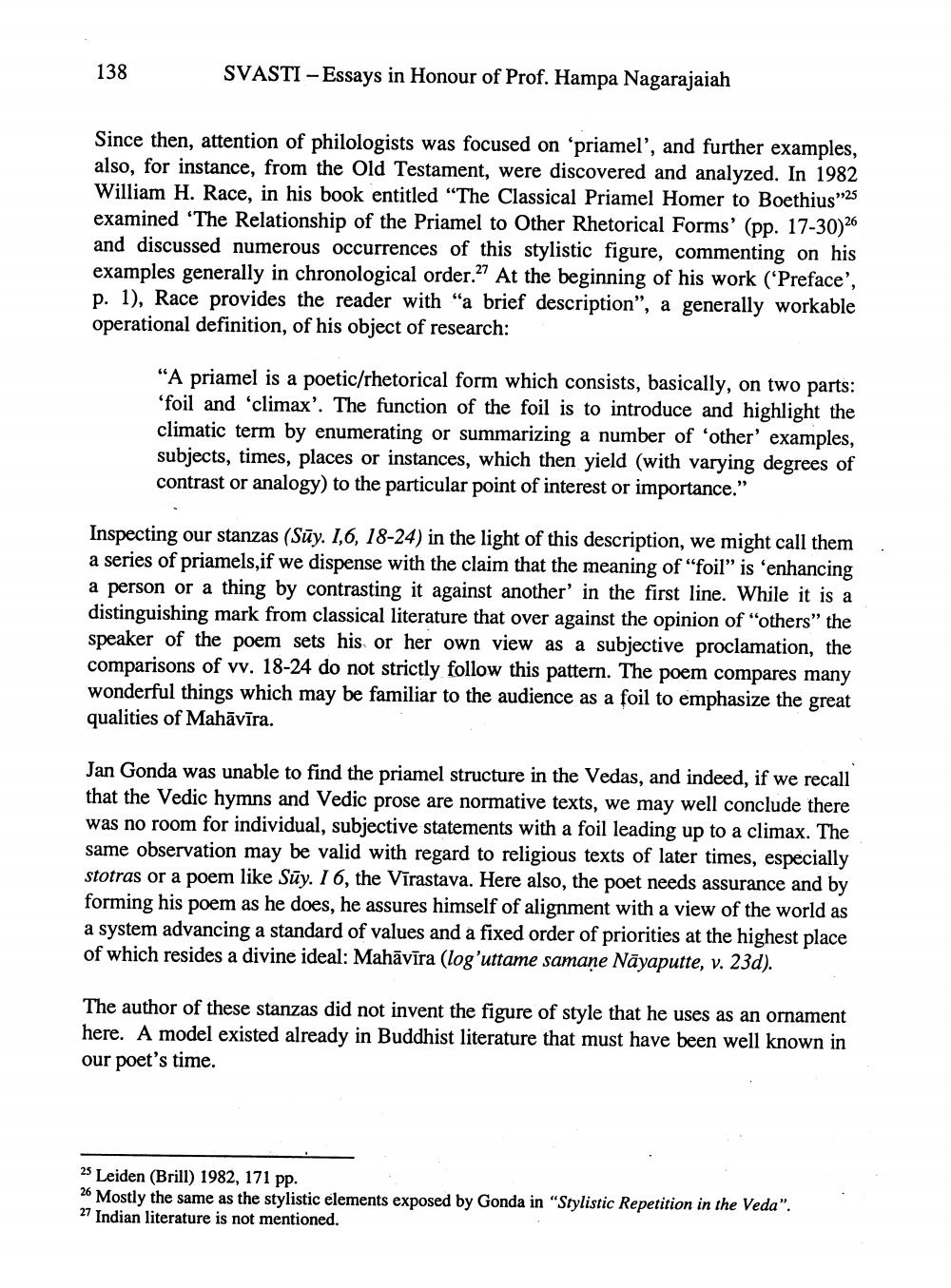________________
138
SVASTI – Essays in Honour of Prof. Hampa Nagarajaiah
Since then, attention of philologists was focused on 'priamel', and further examples, also, for instance, from the Old Testament, were discovered and analyzed. In 1982 William H. Race, in his book entitled "The Classical Priamel Homer to Boethius"25 examined 'The Relationship of the Priamel to Other Rhetorical Forms' (pp. 17-30)26 and discussed numerous occurrences of this stylistic figure, commenting on his examples generally in chronological order.27 At the beginning of his work ("Preface', p. 1), Race provides the reader with "a brief description", a generally workable operational definition, of his object of research:
“A priamel is a poetic/rhetorical form which consists, basically, on two parts: 'foil and 'climax'. The function of the foil is to introduce and highlight the climatic term by enumerating or summarizing a number of 'other' examples, subjects, times, places or instances, which then yield (with varying degrees of contrast or analogy) to the particular point of interest or importance."
Inspecting our stanzas (Sūy. 1,6, 18-24) in the light of this description, we might call them a series of priamels, if we dispense with the claim that the meaning of "foil" is 'enhancing a person or a thing by contrasting it against another' in the first line. While it is a distinguishing mark from classical literature that over against the opinion of others" the speaker of the poem sets his or her own view as a subjective proclamation, the comparisons of v. 18-24 do not strictly follow this pattern. The poem compares many wonderful things which may be familiar to the audience as a foil to emphasize the great qualities of Mahāvīra.
Jan Gonda was unable to find the priamel structure in the Vedas, and indeed, if we recall that the Vedic hymns and Vedic prose are normative texts, we may well conclude there was no room for individual, subjective statements with a foil leading up to a climax. The same observation may be valid with regard to religious texts of later times, especially stotras or a poem like Sūy. I 6, the Vīrastava. Here also, the poet needs assurance and by forming his poem as he does, he assures himself of alignment with a view of the world as a system advancing a standard of values and a fixed order of priorities at the highest place of which resides a divine ideal: Mahāvīra (log’uttame samane Nāyaputte, v. 23d).
The author of these stanzas did not invent the figure of style that he uses as an ornament here. A model existed already in Buddhist literature that must have been well known in our poet's time.
25 Leiden (Brill) 1982, 171 pp. 26 Mostly the same as the stylistic elements exposed by Gonda in "Stylistic Repetition in the Veda". 27 Indian literature is not mentioned.




